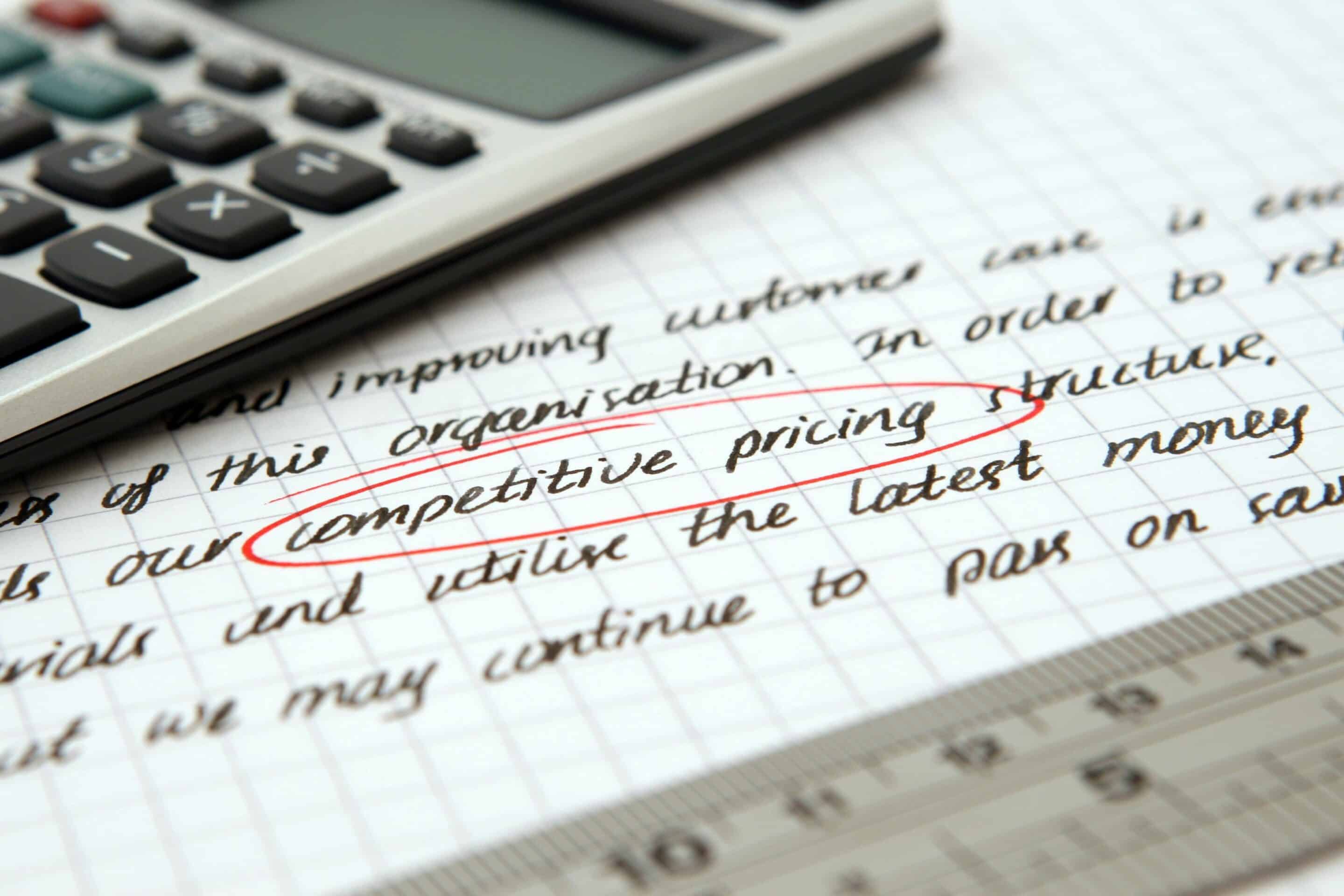You’ve built your business, you’ve nailed your product and you’re ready to go to market. The next step is make-or-break – how much should you charge for your product?
Finding the perfect pricing strategy for your products is tough. Around two-thirds of UK consumers consider price to be the most important thing when choosing what to buy. Set the price too low, and you might miss out on potential profits. Set it too high, and you risk pricing yourself out of the market. It’s a question we often hear entrepreneurs talking about here at Impact Brixton – how exactly do you strike that balance to keep your consumers happy while maximising your profits?
This complete guide to product pricing will take you step-by-step through the process of pricing your products. From understanding customer psychology to analysing market trends, we will provide you with a clear and simple approach to pricing your products in a way that attracts customers and maximises your bottom line. We’ll tick off different pricing strategies including cost-based pricing, value-based pricing, and competition-based pricing, using product cost examples to help you find the perfect product price range for your business.
Are you ready to maximise your profits? Let’s jump in!
The Importance of Pricing in Business
Pricing plays a crucial role in the success of any business. It directly impacts your revenue, profitability, and market positioning. Pricing is not just about putting a number on your product; it is about understanding the value you provide to your customers and ensuring that your price reflects that value.
When setting your prices, it’s essential to consider your costs, competitors’ pricing, and what customers are willing to pay. This will help you find the right price point that maximises your profits while remaining competitive in the market.
And don’t forget, pricing affects customer perception! A product priced too high may be perceived as luxurious or high-quality, while a product priced too low may be seen as cheap or low-quality. It’s all about finding the sweet spot that aligns with your target market’s expectations – that’s how you attract customers and build brand loyalty.
Factors to Consider When Pricing Your Products
When it comes to setting the price of your products, there are several factors that you need to consider.
1. Know Your Target Market – And Their Purchasing Power
The first thing you need to carry out is market research to identify the price range that your customers are willing to pay. And this is where product price elasticity comes into play.
Product price elasticity refers to the degree to which the demand for a product changes in response to a change in its price. For example, if you put your price for your product up, you might find that fewer consumers purchase your product, meaning that demand has dropped.
Tweaking your product pricing is a great way to work out how sensitive your target market is to changes in price. And you might also want to consider introducing product line pricing. This is a pricing strategy where products within a specific line or group are priced differently based on factors such as features, quality, or target market. So instead of pricing each individual product separately, you’d set prices for multiple products within a product line in a way that reflects their perceived value and meets different customer segments’ needs.
2. Consider Your Costs – ‘Product Cost’ Definition
The price that a consumer pays for your product is not the same as your ‘product cost’. Your product cost refers to how much it costs you to produce and deliver your product. This includes raw materials, labour, packaging, shipping, and overhead expenses.
Accurately calculating product costs is essential for determining your pricing strategy. You need to make sure that the price at point of sale covers all of your costs, and ensures a healthy profit margin. You’re not out to break even – the only way you can ensure the sustainability of your business is to make sure you keep making profits.
If you’re reluctant to raise prices for your customers, consider how you can cut costs within your manufacturing process. But be careful – if the quality of your product declines, you’re likely to lose customers, too!
3. Analyse Your Competition – And Make Sure You Come Out On Top
You might think that the easiest way to beat the competition is to make sure that your prices are lowest. But that’s not the case. It’s all about how the price of your product relates to the quality of your product. A third of consumers care more about quality than a year ago, and they’re willing to pay a little moe for a well-made product that lasts.
Research how your competitors are pricing similar products and identify any differentiating factors that justify a higher or lower price. How is your product different from the competition, and how does that impact your pricing? Remember, pricing too far above your competitors without offering additional value may deter customers, while pricing too low may undermine your profitability.
Consider using a product price comparison website to help you here. This is a quick and easy way to get an overview of the market.
Pricing Strategies for Different Business Models
Okay, so now we’ve done our research we have everything we need to dive into tried and tested product pricing models.
Different businesses require different pricing strategies – and it all comes down to their business models and target markets. Here are some key common pricing strategies and how they can be applied to different scenarios.
Cost-Based Pricing
Cost-based pricing involves setting prices based on the costs associated with producing and delivering a product, along with a desired profit margin. This pricing strategy is often used by manufacturing businesses, as their costs tend to be more straightforward to calculate. Here’s a simple product pricing calculator to help you use cost-based pricing.
- Add up all the costs involved in making your product.
- Divide the resulting figure by the number of units of your product produced.
- Add a profit margin to cover your desired return on investment.
This is a great method to ensure that you cover your costs while generating a profit. However, it’s important to remember that cost-based pricing does not consider the value or perception of your product in the market, so it may not be the most effective strategy if your product is unique or offers significant value beyond its production costs. When it comes to choosing a product, low price is not the only thing customers look for!
Value-Based Pricing
Value-based pricing focuses on the perceived value that a product provides to customers. Instead of solely considering the costs incurred in making the product, this strategy takes into account the benefits and outcomes that customers derive from using the product.
To implement value-based pricing, you need to understand your customers’ needs, preferences, and willingness to pay – and this is where market research is crucial. Gather customer feedback and identify the unique value propositions of your product. Then, you can set a price that aligns with the perceived value and benefits your product offers.
Value-based pricing can be super effective if your product solves a specific problem or offers a unique advantage over your competitors. And the main advantage of pricing based on the value delivered? You can capture a higher price point, increasing your profitability.
Competition-Based Pricing
Any product pricing sheet should take into account how much your competitors are charging for similar products. However, competition-based pricing uses this comparison as the main factor in determining the price of your product, relying heavily on thorough market research that identifies direct competitors and analyses their pricing strategies.
To implement competition-based pricing, you can choose to price your product slightly lower, at the same level, or higher than your competitors. Pricing lower can help you attract price-sensitive customers, while pricing higher can position your product as higher quality or more exclusive.
However, solely relying on competition-based pricing may limit your ability to differentiate your product or capture a higher market share. It’s vital to consider other factors such as value, customer perception, and your unique selling points when using this strategy.
Psychological Pricing Techniques to Influence Consumer Behavior
Product pricing is not just a numbers game. Understanding consumer psychology can be a powerful tool in setting prices that influence purchasing decisions.
There are certain pricing techniques that you can use to create perceived value, urgency, or a sense of getting a good deal, ultimately making consumers more likely to buy your product. Here are some popular psychological pricing techniques designed to increase sales and profitability.
1. Charm Pricing
Charm pricing involves setting prices just below the whole pound amount, such as £9.99 instead of £10. This technique leverages the psychological effect of perceiving the price as significantly lower, even though the difference is minimal. Customers are more likely to perceive £9.99 as closer to £9 than £10, leading to increased sales.
2. Bundle Pricing
Bundle pricing involves offering multiple products or services as a package at a discounted price, allowing the costumes to make savings compared to purchasing each item individually. This technique creates the perception of added value and encourages customers to buy more. By bundling products, you can increase the overall price while still providing a perceived discount, leading to higher profits.
3. Limited-Time Offers
Limited-time offers create a sense of urgency and scarcity, encouraging customers to make a purchase before the opportunity expires. This is useful when you need to boost your cashflow, as by offering time-limited discounts or promotions, you can drive immediate sales and create a sense of value for customers. However, it is important to strike a balance and avoid overusing this technique, as it may lead to a loss of credibility for your brand.
With all of these techniques, it’s important to keep track of any price increases, bundle discounts and profitability. That’s where a product price list is crucial. If you’re looking for a product price list template, Canva has a pretty good one, or you could use a product pricing Excel template!
Conclusion: Finding the Right Pricing Strategy for Your Business
When it comes to pricing your products for maximum profit, it’s all about finding that sweet spot. You need to consider factors like what makes your customers tick, what’s happening in the market, and what your competitors are up to. By really getting to know your customers, crunching the numbers on costs, and figuring out what your products are worth to people, you can set prices that bring in the cash and keep your business thriving.
Whether you’re basing your prices on what it costs to make your product, how much people think it’s worth, or what your rivals are charging, it’s important to keep an eye on things and be ready to tweak your prices when you need to. And don’t forget the power of little tricks like making prices look friendlier or being smart about when you change them – they can make a big difference to how well your products sell and how much money you make.
Just remember, pricing isn’t a one-off job. It’s something you’ve got to keep on top of, always looking for ways to make your prices work even better for you. So, dive in, try out different approaches, and watch your business grow.




